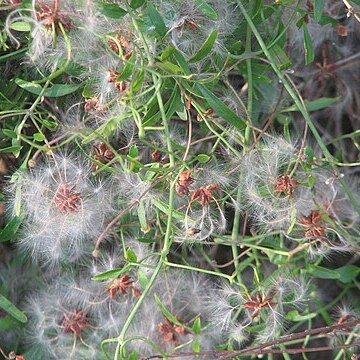A twining creeper. It climbs through and over other shrubs. It grows 5 m tall. It has masses of tuberous roots. The leaves are made up of 3 leaflets on the end of tendril-like leaf stalks. Leaflets are 3-8 mm wide. It produces masses of white flowers. Flowers are about 5 cm across. It has fluffy white seeds. Plants are either male or female. Each flower has 4 prominent, pure white, petal-like sepals. Male flowers have 20 or more cream stamens. The fruit have long woolly tails.

